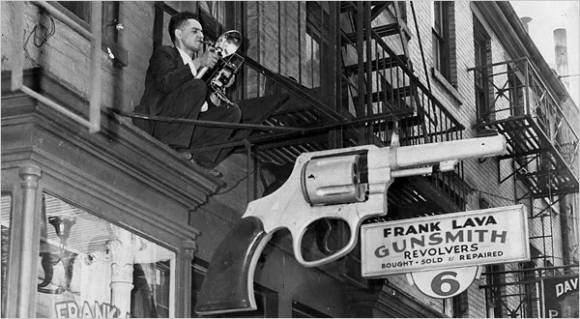‘Credit Photo by Weegee the Famous’: How Arthur Fellig turned images of murder and tragedy into art
posted Tuesday, June 18, 2013 at 12:02 PM EDT
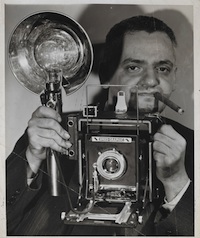
The photographer Arthur Fellig had a reputation for getting to crime scenes before the cops. Finding him standing over a dead body, camera raised to get a shot, they'd say he must have used a Ouija board to know where to go. And so they nicknamed him "Weegee." He liked that and began stamping his photographs "Credit Photo by Weegee the Famous."
Weegee's photos were hard-edged and cynical. He traded in death and tragedy, because that was his world. I met him once, a long time ago -- fittingly, over a dead body. *Warning: Gruesome images to follow.*
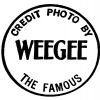
A chance meeting with the master photographer
It was the 1960s, on one those steamy summer nights that drove New Yorkers to sleep out on the fire escape to get some relief from the heat. I was trying to sleep when the shrill siren song of a police car sliced through the night. I threw on my jeans, grabbed my Leica and raced downstairs, headed in the direction of the flashing lights.
In front of the neighborhood soda fountain a few gawkers had gathered under a streetlamp. The cop car pulled up and a couple of uniforms stepped out. I walked over to the halo of light and that’s when I saw her. I had seen her before, a thin, nervous blonde. Now she now lay on the sidewalk broken, her pale blue eyes gazing blankly into the sky, a golden wisp of hair curling across her ear. She looked like a Botticelli angel who'd lost her way and fallen from heaven. But in New York, heaven was only as far away as the nearest rooftop.
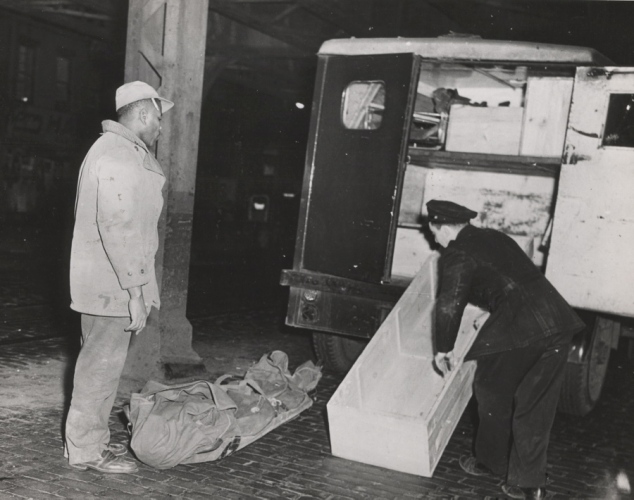
Raising my camera to shoot, my Leica was suddenly shoved hard against my face. "Now, now, none of that," said a tall cop standing in front of me, poking his baton in my ribs. I froze.
"Hey, Cramer leave the kid alone," a voice with an accent as thick as a pastrami sandwich called out over my shoulder. The cop glared then relaxed, his face softening in recognition. "Oh, it's you. How's it going?" the cop said.
Turning, I saw an old guy with a rumpled face and a fat cigar sticking out of it. "Kid," the old man said pulling me away from the cop, "if you’re gonna be a shooter, you gotta get to places before the cops. I ought to know, my name's Weegee."
Owning the New York night
As a young photographer growing up in New York, I knew all about Weegee the Famous. He owned the New York night the way Brassaï owned Paris. They defined their cities with their eyes and their images.
Born in Galicia, Ukraine in 1899, Weegee arrived in New York in 1909, around the same time as my grandparents. He was a short kid named Usher, but America made him "Arthur." Growing up on the Lower East Side in a tenement packed with more people than the subway car at rush hour, he decided to become famous, and photography was the way he was going to do it.
Self-taught, he was aggressive and ambitious and he began hanging around police stations looking for tips from the cops -- and Bowery nightclubs looking for dates with the strippers. That he got to crime scenes before the cops wasn't difficult once he installed a portable police-band shortwave radio in his car. He was the only New York newspaper reporter with a permit to have one.
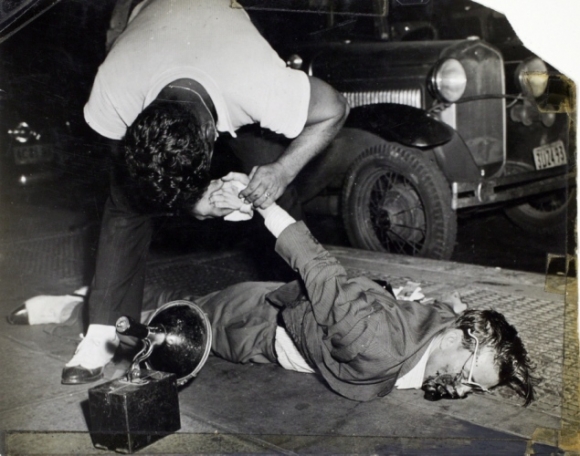
Weegee photographed with a Speed Graphic and shot with sheet film in holders. He developed a style of working that complemented shooting at night and the rough world he inhabited. Pre-setting the camera aperture to f/16, the shutter to 1/200 sec. and pre-focusing to a distance of about 10 feet, he could work fast. For most shots, a single flash was his only light source. These flashbulbs were a point source of light, and produce contrasty images with lots of bright spots and deep shadows. The flashbulbs gave Weegee's photos their signature "noir" look.
Nonetheless getting the shot was only half the game. Tabloids needed crime photos for their morning editions quickly, so Weegee built a darkroom in the trunk of his car. With it he could process film and make contact prints on the spot. He would stamp his prints "Credit Photo by Weegee the Famous" and race them over to the News or the Mirror or the Trib, to make a sale.
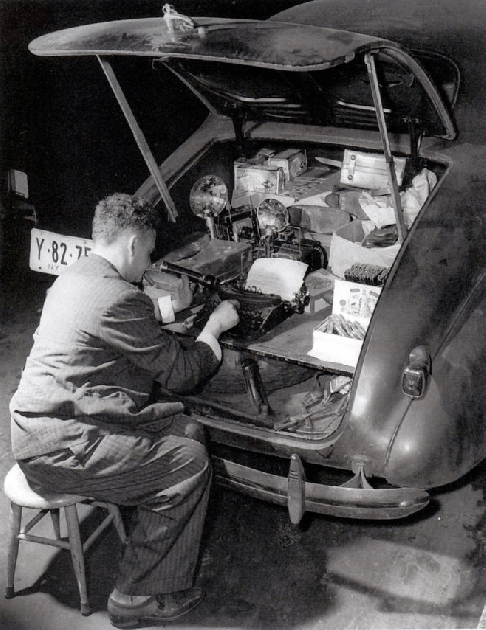
The trunk of Weegee's 1938 Chevy served as his darkroom and office. Courtesy of International Center of Photography/Getty.
Society falls in love with the social critic
Weegee’s pictures were different from other newspaper photographers' images because he kept focused on people rather than events -- even if the people happened to be corpses. His images were unflinching yet compassionate. At a Harlem house fire, for instance, he didn't photograph the fire but rather the tear-filled faces of its victims.
"Names make news," Weegee once explained his approach. "There's a fight between a drunken couple on Third Avenue or Ninth Avenue in Hell's Kitchen, nobody cares. It's just a barroom brawl. But if society has a fight in a Cadillac on Park Avenue and their names are in the Social Register, this makes news and the papers are interested in that."
Weegee the Famous photographed New York society's famous with the sarcastic eye of an outsider. In his classic image, "The Critic," Weegee brilliantly portrays the clash of classes by contrasting the pinched faces of bejeweled, society dames with the scowling face of a working class woman. (Later, it was discovered that Weegee staged the photo, but it's still a powerful image.) Ironically, it was high society that fell in love with Weegee's photographs and embraced him. In 1943, the Museum of Modern Art exhibited Weegee's pictures in a show titled "Action Photography" and later included him in its "Family of Man" exhibit.
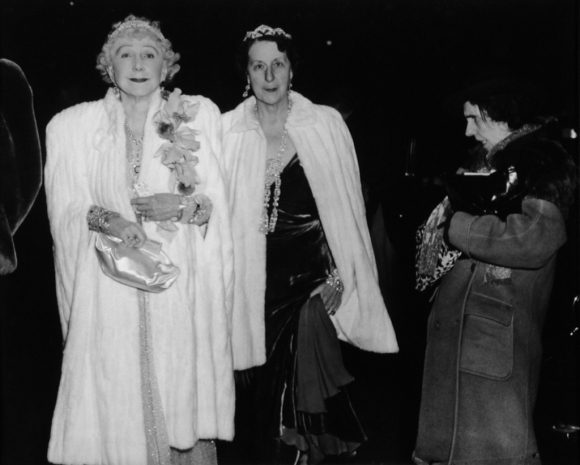
From New York to Hollywood
In 1945, Weegee published his first book, the famous "Naked City," and followed it with "Naked New York." In the 1950s, he went to California and published "Naked Hollywood," a book filled with his experimental distorted photographs of celebrities and featuring a bizarrely puckered Marilyn Monroe on its cover. While in Hollywood, Weegee got work as an actor and sometime consultant. He was the still photographer on Stanley Kubrick’s movie, "Dr. Strangelove," and rumor has it, Peter Sellers copied Weegee’s accent for his titular role. In the 1992 movie "The Public Eye," Joe Pesci played a Weegee-like press photographer named "Bernzy." But Pesci's character was not the Weegee I had met.
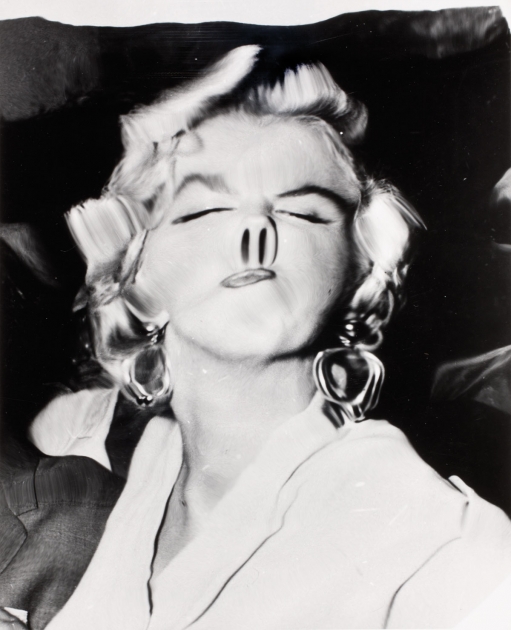
The Weegee I encountered on that hot August night was worn and old. After glancing at the blonde, he walked away and hailed a cab. As he got into the taxi, he looked back and through the haze of blue cigar smoke, I thought I saw him shake his head as though he was tired of seeing so many fallen angels.
Weegee died in 1968, but his famous photographs continue to be shown and admired (or reviled) around the world.
